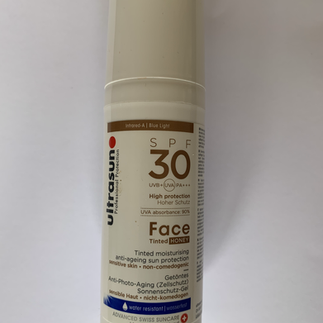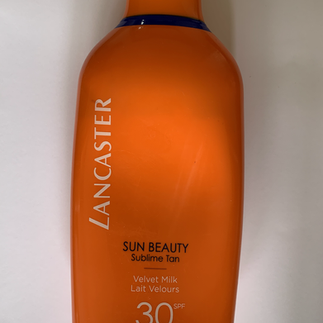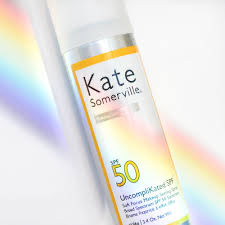The importance of Sun Protection - Do you want to be a grape or a prune?
- nicolameirholistic
- Aug 15, 2021
- 12 min read
Updated: Jun 11, 2023

Those teenage days of laying on Brighton beach covered in baby oil are well and truly behind me. I remember my best friend lathering herself in cooking oil and she literally fried! We didn’t know any better. But thankfully things have changed, there is a lot more knowledge about the damaging effects of the sun and so much choice to protect ourselves including specific products for the face, body and scalp.
Our skin is the largest organ of the body, we wear it every day,
so we need to look after it and protect it properly.
The sun can be great for us both physically and mentally. I love that feeling of the warm sun on my skin. It’s so uplifting. But unprotected and/or excessive exposure is extremely damaging. It can be the difference between having skin that looks like a plump smooth grape or a dry wrinkly prune (I know which I would prefer) and this is without the added danger of skin cancer.
So let’s start with the basics – What does SPF stand for?
All sun protection products will display an SPF number. It indicates the products Sun Protection Factor. There are differing SPFs and the number (i.e. 30 or 50) extends the amount of time our skin can normally be exposed to the sun unprotected before burning. So let’s say that we choose a product of SPF15. This means that once we have applied the product to our skin it will multiply our natural protection (when we don’t apply sunscreen) by fifteen times before we would start to burn. So an SPF15, in theory, would protect us for 150 minutes. However, I say ‘in theory’ because I don’t think it’s wise to rely on this calculation to prevent burning. It can give a false sense of security that we will be fully protected until our SPF time is up. This can be really damaging for our skin. I wouldn’t lay in the sun for two and a half hours straight, let alone when the sun is at its strongest (11am-3pm) using a SPF15. I wouldn’t lay in the sun for this long anyway. It would definitely result in sunburn and most sunscreens won’t remain effective after one and a half to two hours of being applied anyway.
It is much safer to opt for either SPF30 or SPF50 and reapply regularly.
Please don’t go any lower. It’s not worth it.
The higher the SPF number, the more protection our skin will get. I always use a factor 50 or 50+ on my face and either a factor 30 or 50 on my body. As I’ve mentioned, I love that feeling of the sun warming the skin but I try to be so careful and spend more time in the shade these days.
As a general rule this is how the SPF numbers are categorised:
Low – 6 to 14 (long gone are the days of using Hawaiian Tropic SPF2!)
Medium – 15 to 29
High – 30 to 50
Very High – 50+ (this must provide at least SPF60 in testing)
Very high SPFs are suggested for those with red hair and freckle because burning can happen super quick. High SPFs are for people, like me, with fair skin. A medium SPF would be ok if you are any type of ethnicity where your skin tans easily and rarely burns. But I would suggest using a higher SPF to be safer (just one that doesn’t contain titanium dioxide or zinc oxide as these can form a visible ghostly look on the skin, although technology is evolving all of the time.
What is a broad spectrum sunscreen?
As well as making sure that we are choosing a high SPF always look to see if the sunscreen is broad spectrum. This means that it will help to protect from UVA and UVB sun rays. Some sunscreens only protect against one.
UVA are the ageing rays (think A for ageing) which penetrate deep into the skin (to the subcutaneous level) destroying its collagen and elastin causing premature ageing, wrinkles, uneven surface, sagging, pigmentation. UVA also penetrates clouds and glass so even on a cloudy day or when sitting by a window (driving in our car) we need protection.
UVA are the ageing rays, think A for ageing
UVB are the burning rays (think B for burning) which cause skin damage. They have the ability to alter the structure of skin cells (damaging their DNA) and can ultimately lead to skin cancer. Skcin, a melanoma and skin cancer charity, recently reported that one in thirty six UK males and one in forty seven females will be diagnosed with melanoma (the deadliest form of skin cancer) in their lifetime and it’s one of the biggest killers in the 15-34 age group. They talk a lot about taking steps to prevent this from happening by using a broad spectrum sunscreen and reapplying regularly (even in cloudy weather). They also promote early detection by regularly checking moles for changes, being aware of any new growths and seeking medical advice if we notice anything different. Early detection is crucial. The World Health Organisation have identified UV light as a proven human carcinogen.
UVB rays are the burning rays, think B for burning
It’s important to note that the sun protection factor (SPF) is usually only relevant to UVB light (burning rays) so it is only giving us half the picture about how much the product is going to protect us. Look out for the letters UVA in a circle on sun products as this proves that it will provide at least a third of its protection against UVA (as well as UVB) and will be broad spectrum.
What type of sunscreen should I use?
So we’ve looked at what the Sun Protection Factor means . Let’s now look at the types of sunscreens available. There are two main types – Chemical sunscreens and Physical sunscreens (which are sometimes referred to as Mineral or Natural)
Chemical sunscreens absorb the UV light and turn it into heat. When applied they trigger a chemical reaction within the skin which activates their protective mechanism. It’s usually recommended to apply twenty minutes before going out in the sun as this allows the process to take place. Some commonly used chemical UV filters are octocrylene, helioplex, avobenzone, oxybenzone.
Physical/Mineral sunscreens are sometimes referred to as natural sunscreens, usually for marketing purposes. They work by reflecting the UV light away from the skin. However, it has been recently proven that they only reflect a very small amount and absorb most of it, turning it in to heat within the body like chemical sunscreens. They are effective as soon as they are applied. But because they sit on the skin they need to be reapplied often especially after swimming or exercise etc as they may have been washed or sweated off. Physical sunscreens are usually made with minerals such as titanium dioxide and zinc oxide. Although they will go through a chemical process to become part of the sunscreen so are not necessarily ‘natural’. These minerals are pulverised (mostly invisible to the naked eye) and when applied in a sunscreen they sit on the surface and reflect the UV rays. They can sometimes leave the skin looking ghostly, can feel a bit greasy and may not create the best base for make up if this is being applied after SPF. However, formulas are evolving continuously.
Is there a way of tanning safely?
The crux of the matter is that there is no safe tan. When our skin tans this is a sign of DNA damage. It’s our body trying to protect itself from the UV light. So a tan is sun damage. Melanocytes are cells that are responsible for creating a pigment called melanin. This is what determines our skin tone. The more melanocytes we have the darker our natural skin colour. When exposed to the sun they produce more melanin to try to protect the skin. But this is actually sun damage. Avoid the hours between 11am and 3pm when the sun is at its hottest. This is the time that we are most likely to burn. It is possible to still tan in the shade. The sun reflects off of water, floor tiles and sand right onto our skin. But we are less at risk of burning. If tanned skin is what’s wanted, try to opt for self-tans. Many of the formulas are fantastic these days.
A tanned skin is damaged skin
How much should I apply and how often should I apply it?
Most of us don’t apply enough sunscreen. We need to be more generous. Slather it on! Don’t be shy! If we look at our forefinger and middle finger with the knuckles facing down we need to apply a line of facial SPF to each of those fingers from base to tip and that’s how much we need to apply to our face, neck and ears. Depending on how tall we, are a couple of teaspoons is good guidance for each area of our body i.e. each arm, each leg, chest, back. Don’t forget feet and hands too! Most of us may find we go through SPF quicker than we usually do if we take this advice on board.
Most of us don't apply enough sunscreen
Regardless of the factor reapply sunscreen every one and a half to two hours if we are sitting in the sun, more frequent if we are in the water. When applying to the face first thing in the morning it should always be the last cream applied to the skin (after cleansing, toning/acid toners, eye creams, serums, moisturisers/aftershave balms) and before applying any make up.
I have an SPF in my moisturiser/primer/foundation, surely that’s enough?
There are a few reasons why SPF in a moisturiser or other product isn’t the best option for us. Firstly SPF is a combination of powerful ingredients which will overtake any active or expensive ingredients within any other cream. So if we are buying a pricey ‘anti-ageing’ moisturiser with an SPF it will literally be an expensive SPF moisturiser without the benefits of the other ingredients.
Secondly, an SPF within another product like a moisturiser will often give a false sense of security. We apply it in the morning and that’s it. When in reality we should be applying it throughout the day at intervals. SPF needs to be reapplied and there are some fantastic SPFs available on the market these days that can be sprayed over make up.
Thirdly, chances are that we aren’t as thorough when applying moisturiser as we are when applying a dedicated SPF so our faces won’t be fully covered. We might be a bit more slap dash with our moisturiser compared to applying an SPF.
Another reason is that a moisturiser containing SPF will usually only protect against UVB rays, so we may not burn but we aren’t protected from the UVA rays. These are the rays that have a detrimental effect on our collagen and elastin.
And lastly, moisturisers with an inbuilt SPF will invariably not be water or rub resistant. So if we apply make up over the top of it with a brush or our fingers we will rub some of it off. If it’s been a particularly hot day and you’ve sweated it will be gone!
It's so much better to layer up. Allow our moisturiser to deliver great skin benefits, our SPF to protect our skin in the best way possible and our foundation to provide fabulous colour and coverage. Be aware that if several different products are being applied with differing SPFs the overall SPF rating will not accumulate. We can’t add them up and be triple protected. We will be protected at the level of the highest SPF that we have applied.

What is the best SPF for me?
The best SPF is the one that we are going to use and continue using. If it’s at all possible, try several before buying and see how they feel on the skin. Find one that you like where the texture works for you and keep on using it. Bear in mind if make up is going to be applied on top. Does it provide a nice base? SPFs have come a long way since the days of being greasy and gloopy. There are many non-oily and non-comedogenic (won’t block pores) formulations available. And at the other end of the scale there are richer creams for those with a dryer skin type.
But what about Vitamin D, don’t we need sun exposure for this?
We need some exposure to the sun to produce Vitamin D. Without it our bodies are unable to properly absorb calcium and we may be more susceptible to high blood pressure, headaches, low mood, poor quality sleep, osteoporosis, diabetes and arthritis to name a few. Food sources are quite difficult to come by. So exposing our skin to UVB is the primary way of making it in our bodies. The sun’s UVB rays interact with a protein called 7-DHC in the skin, converting it into vitamin D3, the active form of vitamin D.
It is possible to maintain Vitamin D levels whilst wearing sunscreen
It’s been recommended by The British Skin Foundation that we get at least 20 minutes of sun exposure a day to fortify our vitamin D production. These can differ from person to person depending on skin type, weight etc and generally the darker your skin the more exposure you will need. Many people, mainly women, now take daily Vitamin D supplements as they are deficient. So here we have a juxtaposition – the need to protect our skin from the sun’s rays and the need to exposure our skin for vitamin D absorption. So how can we get vitamin D exposure safely? Clinical studies have shown that sunscreen use doesn’t lead to vitamin D deficiency. In fact, it is the case that people who use sunscreen daily can maintain their vitamin D levels. One explanation for this is that no matter how much sunscreen we apply to our skin, there will always be some of the sun’s rays which will reach the skin. For example, an SPF50 will filter out 98 percent of UVB rays and this is only if we apply it properly. So it is possible to synthesis the vitamin D necessary for our bodies whilst still wearing sunscreen.
Other important considerations
Most sun damage is done in the first twenty years of our lives. The appearance of age spots and pigmentation when we’re older is due to sun damage when we were younger. So sun protection needs to become a habit early on in life.
Even though the darkest of skin tones have an inbuilt SPF of around 13 and are not quite as vulnerable to UV light they still need protection from UV damage by using an SPF. A minimum of SPF30 is recommended. No one is immune from sun damage unfortunately.
If our SPF doesn’t have an expiry date, assume that it will last a year. After that it loses its efficacy. Purchase new SPF every year.
In Europe SPF label classification is not the law, it’s just for information because it is classed as a cosmetic. In the US SPF classification is required as it’s considered a drug. However, European manufacturers are permitted to use seven proven UVA filters while the US can only use three. This means that European products definitely have the potential to be more effective.
A lot of skin damage (in addition to on the face) happen to the back of the neck, tops of the ears and tip of the nose. We mustn’t forget these areas when applying product.
If swimming in a chlorinated pool it’s necessary to shower before applying more sunscreen.
If acne is a problem opt for an oil free SPF as some can be too rich and block the pores which will only exasperate the situation. But thankfully there is a lot of choice available.
Don’t use SPF instead of moisturiser, they do different things. Apply moisturiser first and follow with SPF.
Always double cleanse (cleaning our faces twice) at the end of the day if SPF has been applied. SPF is designed to stay put on our skin, to protect it, so it will take more rigorous removal. Balms and oil cleansers are best for this in conjunction with a soft flannel.
SPF isn’t just for use abroad, the sun is still very strong in the UK. You’d be forgiven for thinking that this is the case though. If you go shopping in Boots or a supermarket during the summer months that’s when all of the big sunscreen displays are on sale. Go in during winter and you won’t find them. Most people think that sun protection is only needed during the summer months. But the sun’s rays are always there, even on cloudy days, even in winter. 75% of UV rays can penetrate through windows too.
If on holiday and sunbathing, carry a small bottle of micellar water and cotton pads in a beach bag. Instead of putting layer upon layer of SPF on which can end up blocking pores, trapping sweat and dirt (which can cause blemishes), remove with the micellar soaked cotton pads and apply a fresh layer. Keep pre soaked pads in a small lunch box for extra convenience.
Sunscreens work best on exfoliated skin. Otherwise we are just sealing the SPF to dead skin cells which can rub off more easily.
Avoid using perfume on top of SPF as it will break down its efficacy stopping it from working as well, plus it can cause pigmentation and sensitivity.
Avoid using retinoids, peels, glycolic acids when in the sun for long periods (I wouldn’t recommend being in the sun for long periods anyway) as skin will be a bit more vulnerable to sun damage and sensitivity.
Aftersun is a must. Apply after a shower to dry or damp skin once chlorine, sunscreen, sweat, sea salt etc has been thoroughly washed off.
If you are a teenager or in your early 20s please don’t think that SPF is decades away. It really isn’t. Most sun damage occurs before your 21st birthday but it won’t show up for a while. Now is the time to start taking ownership for protecting your skin.
Don’t forget hands. When we protect our faces (and the rest of our bodies) we should be protecting our hands too. If pigmentation is already a concern, this may get darker when exposed to the sun. Slather SPF on them during the day and cover in a hand cream containing a proven ingredient that works on signs of ageing i.e. retinol, AHAs, to treat any damage that has already been done.
I really hope this has given an insight into the world of SPFs and shed some light on what is, sometimes, a confusing area of skin and body care.
You can also find this article on www.perfumeryandcompany.com They are an independent beauty and fragrance boutique and I am their resident beauty blogger. I write regular articles for them (all of which can be found on my website too).
N x
Here are my personal sunscreen picks. These are all products I have tried and rate highly:
Update:
Since first publishing this article nearly two years ago I've had the chance to try several other suncreams, some of which I have loved. I've added these below with some of my all time favourites:





































Commenti